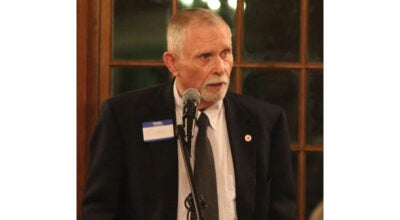County discuss lack of sewer on Lover’s Lane
Published 11:17 am Saturday, June 10, 2017
WINDSOR
When Lover’s Lane was annexed by the Town of Windsor in 2002, its residents were promised that they would receive all services provided to town residents, which many understood at the time to include access to a public sewer system.
But since the Town does not own its own sewer system, and instead relies on the county’s, that part of the deal never happened.
Now, about 15 years later, many of those residents are still depending on the original septic tanks that were put in place when the street was first developed during the 1960s, and some of those tanks are now nearing or already past their life expectancy.
“We’re living on borrowed time,” said Councilman Greg Willis, who lives in one of those houses, during a recent intergovernmental meeting between Windsor and the Isle of Wight County Board of Supervisors on Tuesday evening. The town’s lack of adequate sewer and stormwater drainage capacity were two of the meeting’s primary topics.
“People got all services offered by the Town; I’m not saying anybody misled anybody,” said Councilman Tony Ambrose, who also at one time lived on Lover’s Lane. “I was one of those people who assumed that I would be getting sewage as well, but since the town doesn’t offer sewage, you can’t really fault them for that.”
Ambrose said that the biggest issue in providing Lover’s Lane residents with access to the county’s sewer lines would be cost, citing that neither the town nor the county has the infrastructure in place to service that area. He added that the Town would also need to partner with the County to make public sewer hookups on Lover’s Lane a reality, hence the presence of Don Jennings, the county’s director of utility services, at the meeting.
“It’s the county’s sewage system; they have the agreement with HRSD [Hampton Roads Sanitation District],” Ambrose said.
The Town and County representatives briefly debated the pros and cons of using a vacuum or gravity sewer system. According to Ambrose, most of the sewer infrastructure throughout the town is a vacuum system, which, as he understands the technology, uses a vacuum to ensure flow, even when going uphill. A gravity system, on the other hand, relies on gravity to create flow and can only go downhill.
He added that the vacuum system used throughout most of the town was likely the less expensive option at the time the infrastructure was first installed but today, it is the more expensive of the two options.
One possible solution discussed was to form some sort of partnership between the town, the county, residents and land developers to come up with the money to expand Windsor’s access to public sewer.
“Maybe we can all chip in together, because I don’t think that any single party could afford to do it,” Ambrose said.
A similar suggestion was made when the Town and County representatives discussed Windsor’s ongoing issues with flooding However, Jennings said that doing so could create new issues for the town and county by using public funds to improve and maintain someone’s private property.
“It’s a little bit of a slippery slope; we don’t want to spend a lot of public dollars but it’s not just the homeowners that are causing the damage,” Jennings said. “We would be starting a policy by spending public dollars to fix a private drainage way. If it becomes a town asset, you can use public dollars to maintain it.”
Town Manager Michael Stallings added that the town or county could also be compelled to address everyone’s drainage issues if they were to spend public money to fix one person’s lot.
“Once you turn on that faucet, it’s impossible to shut it off,” he said.
Board of Supervisors Chairman Rex Alphin said the challenge from the county’s perspective would be how to address the issue without incurring further water and sewer fund debt, estimating that the county spends approximately $4.5 million each year to subsidize the fund.
Councilman Walter Bernacki said he was under the impression that a lot of residents’ flooding problems began shortly after construction of Windsor High School was completed, and asked if anyone could legally hold the county liable for flood damage because of runoff from the high school lot. County Attorney Mark Popovich responded that residents would have to prove that the county government caused the problem through expert testimony, but said that proving such a claim would be extremely difficult.
Additional matters discussed at the meeting included the need for a new library in Windsor and the Virginia Department of Transportation’s latest plans to improve the existing Route 460 corridor.





